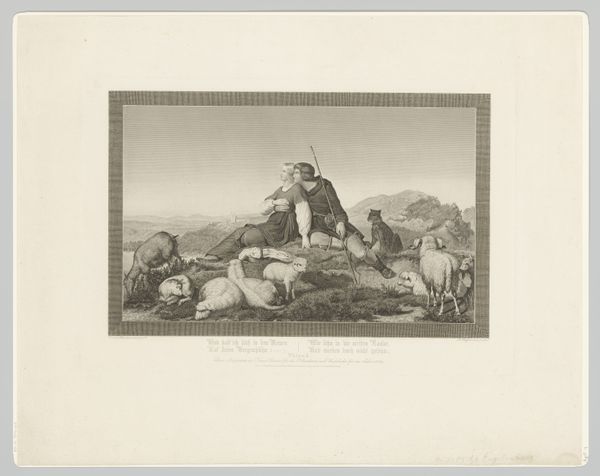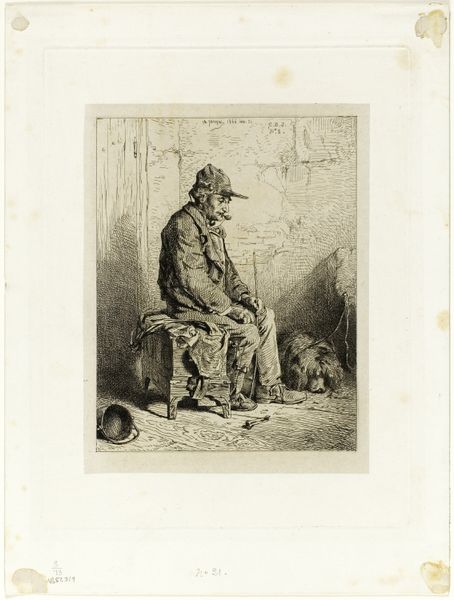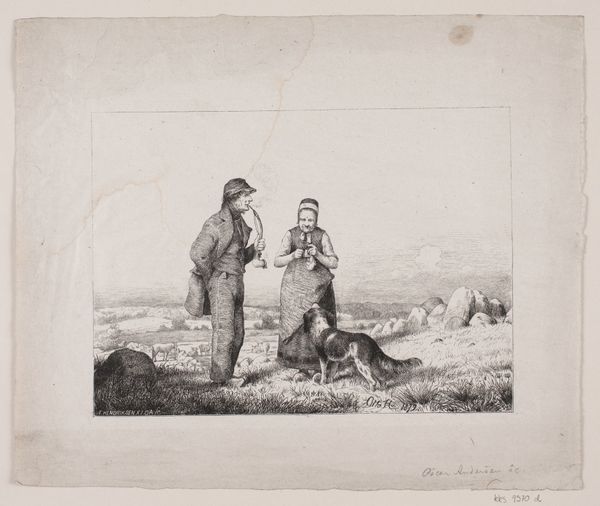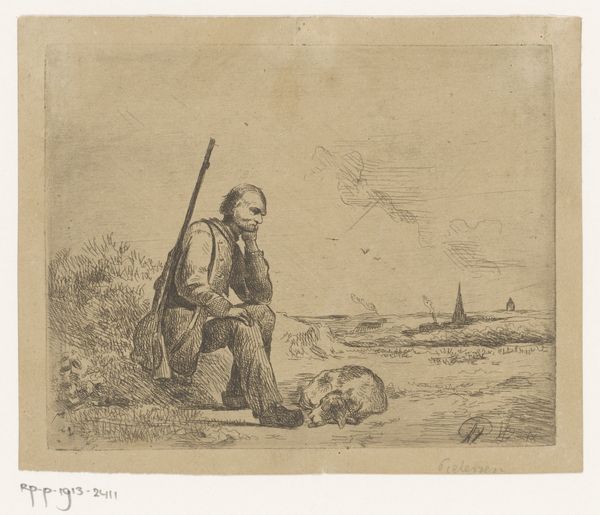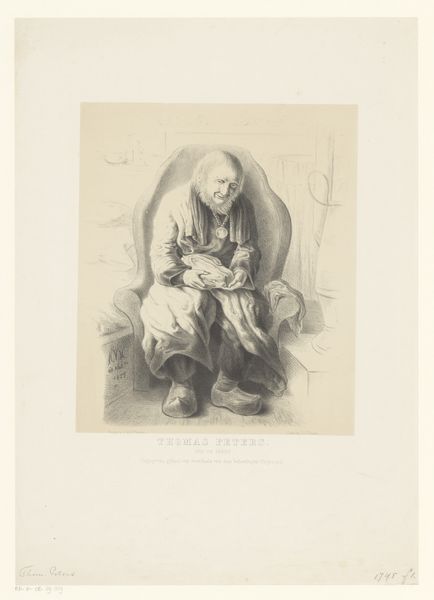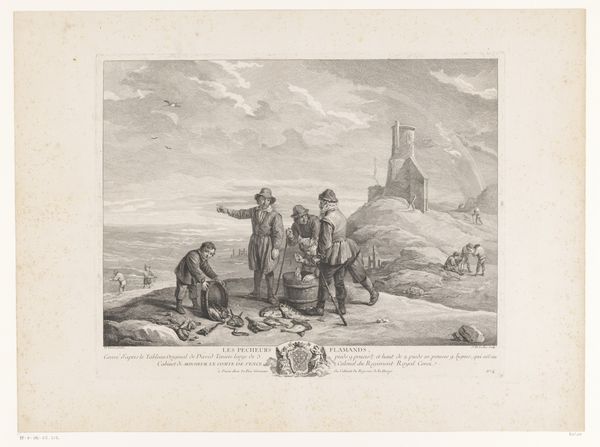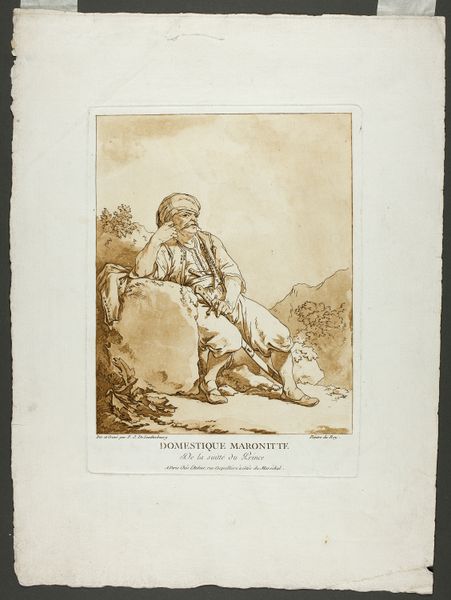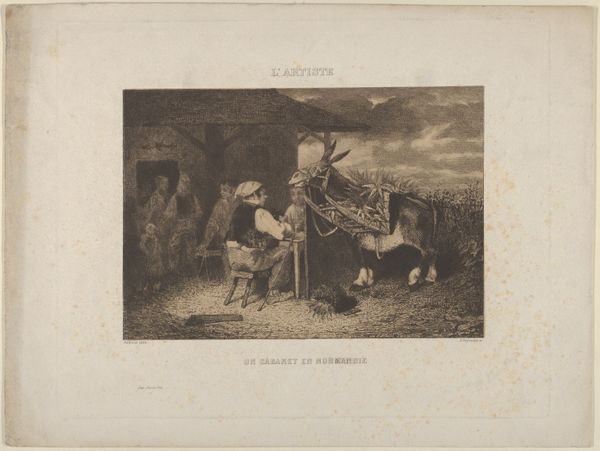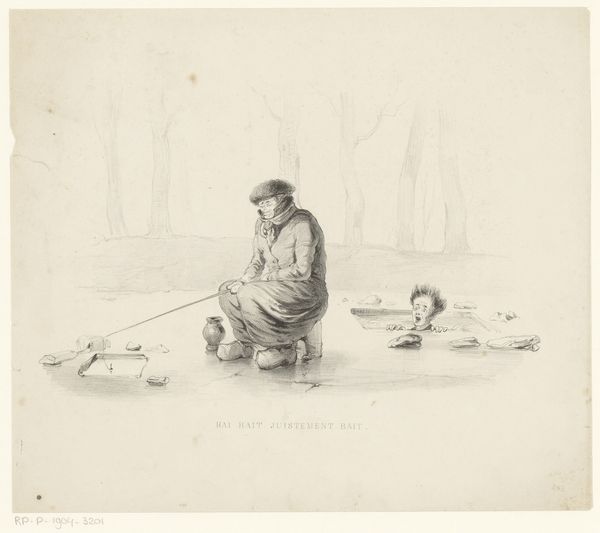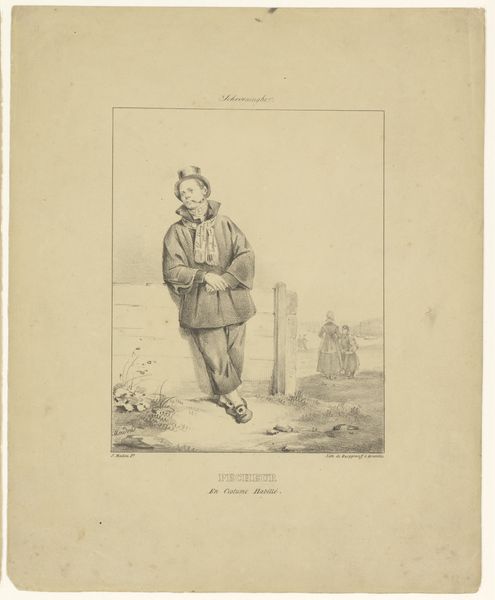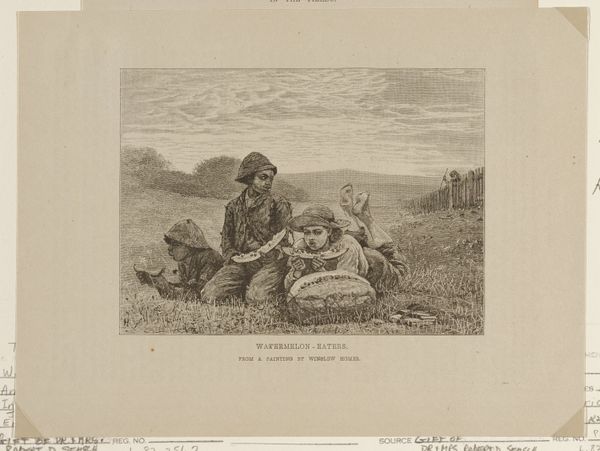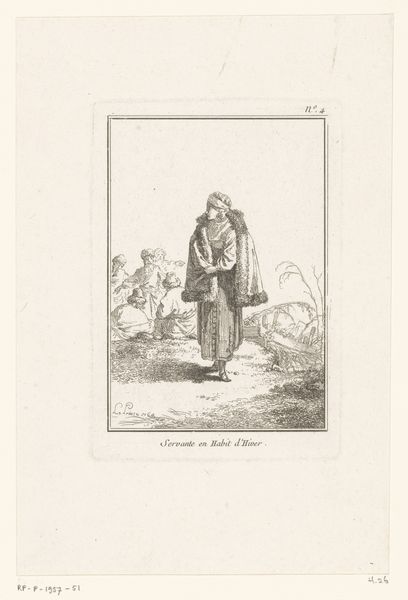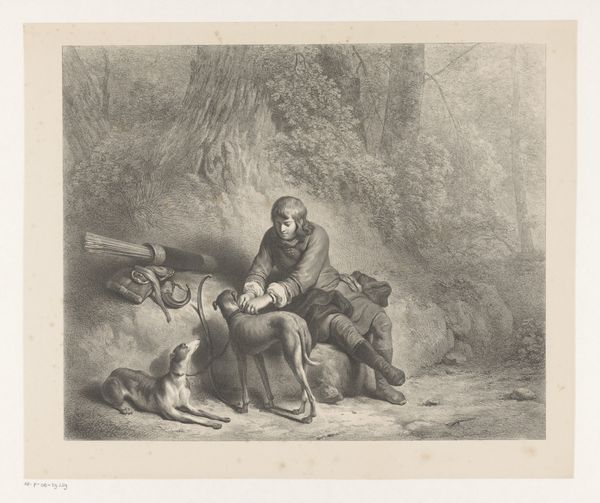
Dimensions: 273 mm (height) x 329 mm (width) (billedmaal)
Editor: So, this is Adolph Kittendorff's "Skovrider C.R. Brem ved Gisselfeld Kloster," a lithograph from 1856. It gives off a really composed, almost staged feel, with this figure dominating the landscape. What visual echoes do you see here? Curator: Immediately, the presence of ancient monoliths strikes me. Notice how they stand beside Brem and even seem to mirror his form. They predate him and yet stand as witnesses to his domain. Consider, too, how the relaxed hunting dog and slain rabbit function—do they enhance Brem’s mastery over this space or, perhaps, hint at a more cyclical view of life and nature? Editor: That's an interesting point, that tension between mastery and cycle. I was just seeing a confident landowner. The monoliths weren't even on my radar! Curator: Precisely. These standing stones, relics of a pre-Christian past, infuse the image with a deep sense of cultural memory. He's not merely posing; he's being framed by a history he now inherits. Are there other clues about his relationship with nature that stand out to you? Editor: Well, the gun, obviously. And the dead rabbit. But thinking about it, the dog seems less about the hunt and more like a companion, adding softness…a gentler note, perhaps. Curator: It’s this interplay – these layered symbols of dominion, tradition, and companionship – that gives the work its depth. What does this image tell us about how this society viewed its relationship with nature and history? Editor: I guess I see that it’s not just a portrait. It is about this man’s place in the landscape, in time, in history, too. Curator: Indeed. Kittendorff asks us to reflect on what it means to occupy a specific place in the grand tapestry of time, and what continuities persist.
Comments
No comments
Be the first to comment and join the conversation on the ultimate creative platform.
